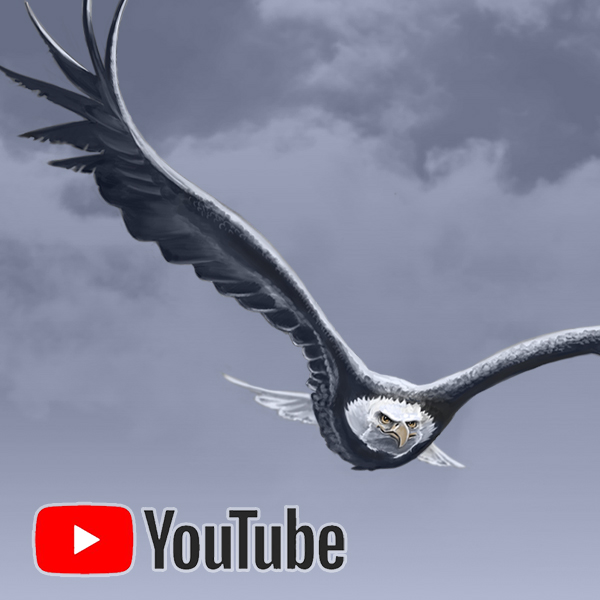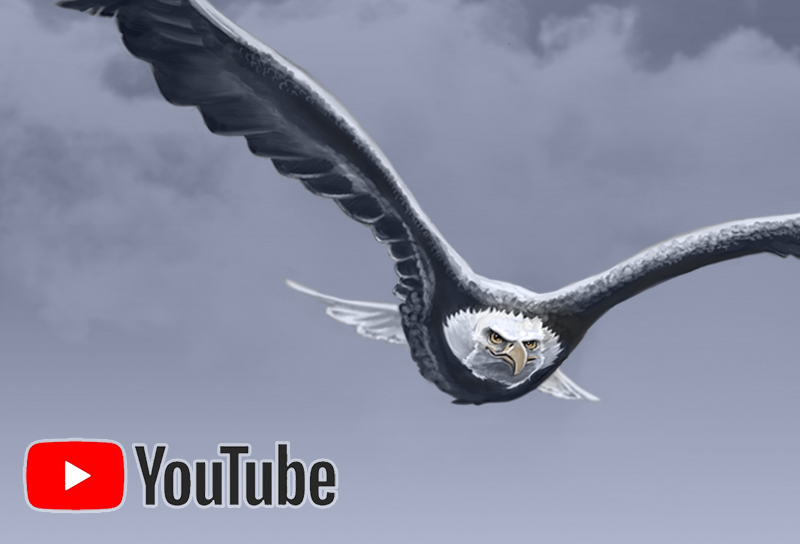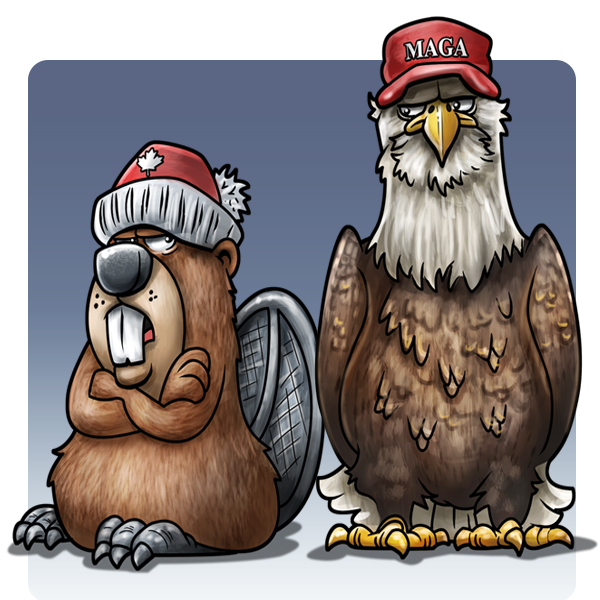
As many of you know, my art business consists of editorial cartooning and whimsical wildlife paintings. My syndicated editorial cartoons used to provide a decent full-time living, but with the decline of newspapers, it’s now less than half of my income. Fortunately, my painted work keeps growing and carries more of the load when it comes to paying the bills.
But editorial cartooning is still a big part of my job. The images you see in this post show the different stages of each cartoon I draw, this one about the unwelcome trade war Canada now finds itself in with the United States.
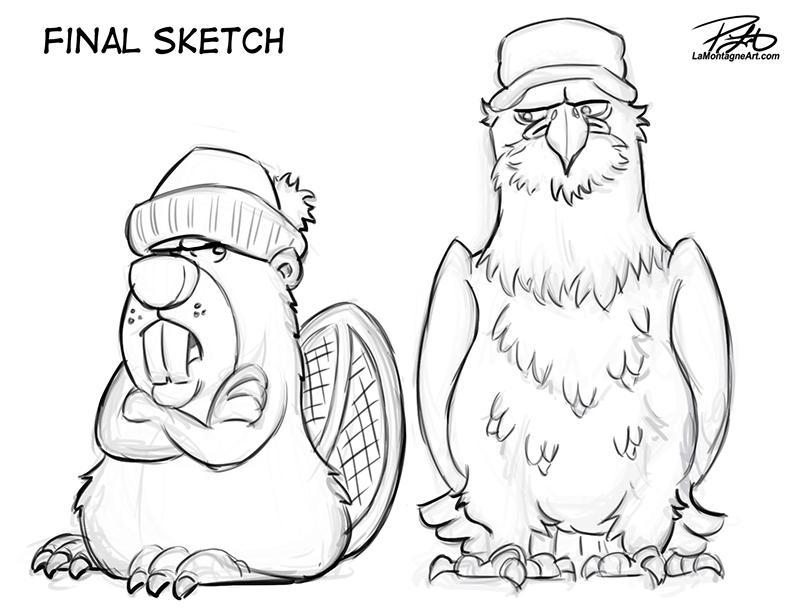 Each week, I draw five or six syndicated editorial cartoons. I follow regional, provincial, national and international news and draw illustrated commentary on prominent stories. Many of my weekly clients across Canada only run my cartoons in their publications, some for over a decade. Other clients, especially daily papers, will pick and choose from submissions from several cartoonists. Despite the belief that journalism is unbiased, it most certainly is not. Some newspapers lean left while others lean right.
Each week, I draw five or six syndicated editorial cartoons. I follow regional, provincial, national and international news and draw illustrated commentary on prominent stories. Many of my weekly clients across Canada only run my cartoons in their publications, some for over a decade. Other clients, especially daily papers, will pick and choose from submissions from several cartoonists. Despite the belief that journalism is unbiased, it most certainly is not. Some newspapers lean left while others lean right.
Prime Minister Trudeau is deeply unpopular everywhere in Canada, so most newspapers will run a cartoon that casts him in an unfavourable light. But, sometimes, I will draw a cartoon that calls out a right-leaning leader, like Opposition Leader Pierre Poilievre or Alberta Premier Danielle Smith, and even as I draw the toon, I know that some of my Alberta newspapers won’t run it.
Editorial cartoons are not unbiased, nor are they supposed to be. Just like a written opinion piece, the cartoon is my perspective. Some readers will agree with it; others will not.
In addition to my syndicated work, I draw one weekly local cartoon for The Rocky Mountain Outlook, the newspaper of record for Banff, Canmore, Lake Louise and the rest of the Bow Valley. I’ve been their cartoonist since day one in 2001, and it’s a point of pride that I have never missed an issue. It’s rare that the cartoon on the editorial page isn’t about an issue close to home. While the Outlook has mostly supported my work for many years, each idea is subject to my editor’s approval. I don’t own that spot on the editorial page and can’t simply draw whatever I want.
With syndication, however, I have free reign. It’s then up to my newspaper clients to decide whether they want to run a cartoon I submit. If one rubs them the wrong way, they get four or five others that week to choose from.
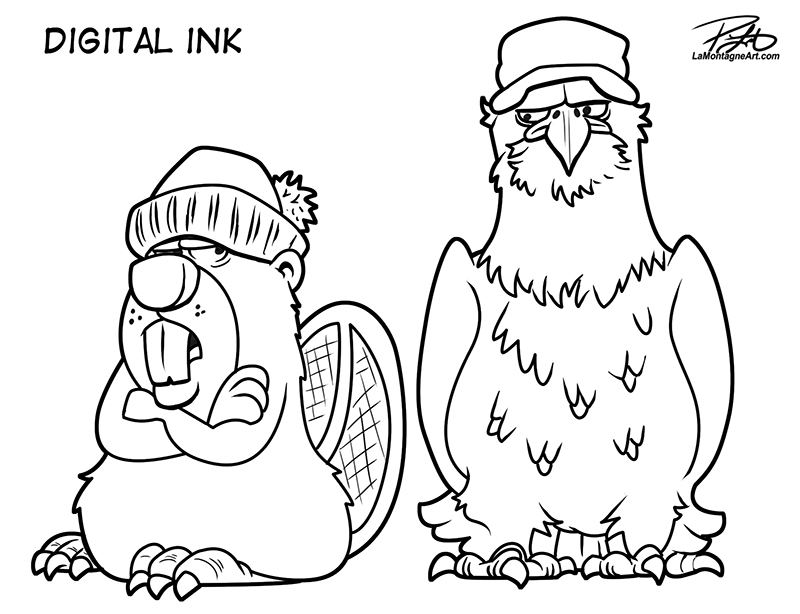 Years ago, I recall that somebody in Canmore came up with a proposal that each business in the community should contribute to a tourism promotion fee. Some businesses complained they shouldn’t have to because they weren’t in the tourism business.
Years ago, I recall that somebody in Canmore came up with a proposal that each business in the community should contribute to a tourism promotion fee. Some businesses complained they shouldn’t have to because they weren’t in the tourism business.
Even if you only ever see locals in your business, if they work in tourism, then so do you. Without tourism to pay your customers, your customers can’t pay you. If tourism suddenly vanished around here, so would most businesses in town and the people who work in them.
This weekend, in an unjustified demonstration of selfish aggrandizing aggression, the President of the United States levied a 25% tariff on all goods from Canada, with 10% on energy. I won’t get too deep into why none of this makes sense, but one easy objection is that this is not about fentanyl trafficking, as he claims.
A Homeland Security Commission in 2022 concluded that “Canada is not known to be a major source of fentanyl, other synthetic opioids or precursor chemicals to the United States, a conclusion primarily drawn from seizure data.”
A 2020 DEA intelligence report stated, “While Mexico and China are the primary source countries for fentanyl and fentanyl-related substances trafficked directly into the United States, India is emerging as a source for finished fentanyl powder and fentanyl precursor chemicals.”
Canada wasn’t implicated by either agency. But it’s hardly surprising, because the President changes his reasons for the tariffs with each passing day. One day it’s fentanyl, then immigration, then a wildly exaggerated trade deficit number that he calls a subsidy (it’s not), and today it’s that “Canada doesn’t even allow U.S. Banks to open or do business there. What’s that all about?”
It was another false claim that was easy to debunk, as the Financial Post did within two hours of the President’s declaration. US banks have been operating in Canada for a long time, one for more than 100 years.
You will have no trouble finding educated insight into this recent tariff issue, especially from economists and business leaders on either side of the border, who say this will be incredibly damaging to the economies of both countries.
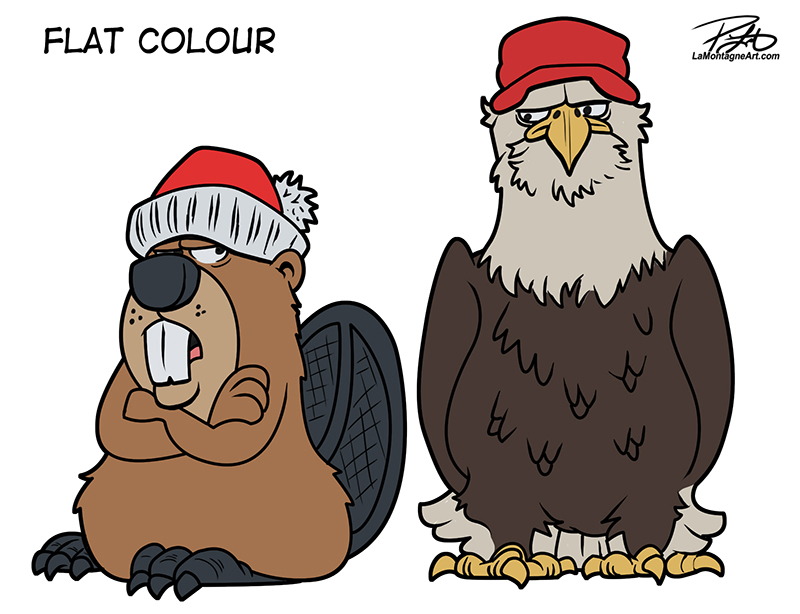 Canada and the United States have had a unique, enviable, and friendly relationship for longer than any two countries. We’ve often referred to each other as family. We’ve had our ups and downs; every relationship does, but it has always endured.
Canada and the United States have had a unique, enviable, and friendly relationship for longer than any two countries. We’ve often referred to each other as family. We’ve had our ups and downs; every relationship does, but it has always endured.
This unprovoked schoolyard bully attack has Canadians upset and angry. The 51st state nonsense is insulting, rude and childish, especially repeated ad nauseum over the past few months. But we hoped it might pass, and the President would find other means to distract his supporters from his false promises to make their lives better. Shouldn’t at least those voters be his primary focus? Because this ain’t that, regardless of how he paints it.
Tariffs will not decrease grocery prices in the United States. Those prices are going to go up, as they will for cars, furniture, gas, heavy equipment, and many more components, parts and products that Americans import from Canada. Even the average oil change in the US will likely increase by 30%. Tariffs will impact purchases most people never even think about, and those in Congress more concerned with keeping their titles and salaries than serving their constituents know it.
But hey, their financial security isn’t in jeopardy. Not yet.
Realtors in Florida and Arizona are seeing more second homes on the market than in years as Canadians leave communities, no longer feeling welcome in the United States. My parents lived in Arizona in the winter for over a decade. A hairdresser once told my Mom she had to get a part-time job during the pandemic when Canadians couldn’t travel south.
Canadians represent 27% of all international visitors to the US, contributing $16.4 billion in 2018, according to the US Travel Association. Whether talk translates to action is anyone’s guess, but I’ve heard several Canadians say they won’t take a U.S. vacation anytime soon. Why go where you’re not welcome?
Buy Canadian stickers are now popping up all over Canada, and trade barriers between provinces will likely disappear, as they should have years ago. It’s ironic that an unwarranted attack by our closest trading partner might do more to unite Canadians than our own politicians have managed in recent memory.
The tariffs levied against Canada this week and our retaliation measures will severely impact both economies, and some experts suggest that Canada may fall into a recession. And just like businesses in this valley who didn’t think they were in the tourism business, Canadians and Americans will soon find out just how much it’ll hurt all of us when people in other professions start losing their livelihoods.
Late Breaking Edit: As of Monday afternoon, the threatened tariffs have now been delayed for 30 days following a phone conversation between Prime Minister Trudeau and President Trump. This is not a reprieve. Canada remains under the same threat.
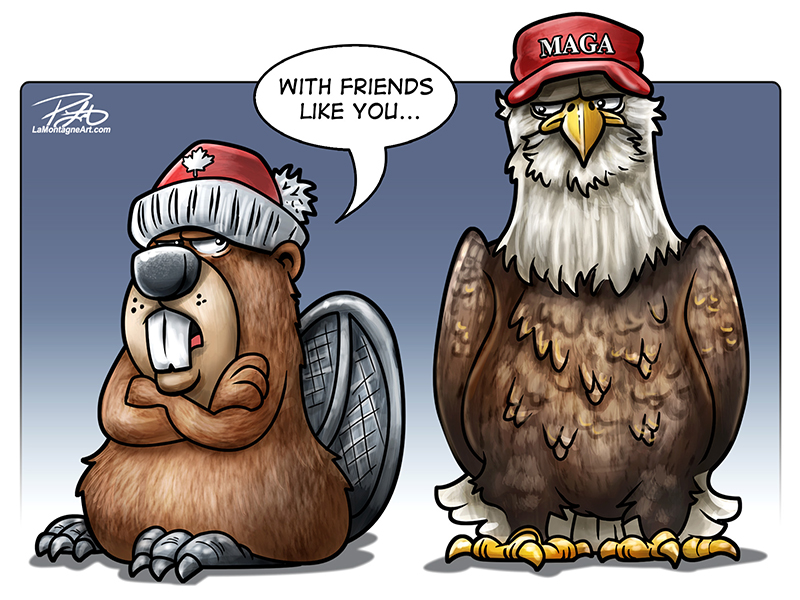 On Saturday, I paid my deposit and applied for the Banff Christmas Market this year. While anything can happen between now and the end of the year, I’m already lowering expectations. I’m currently sourcing and buying stock for the Calgary Expo at the end of April, but I’m no longer planning on some products. I don’t think people will have money to spend on luxuries, and my work certainly qualifies.
On Saturday, I paid my deposit and applied for the Banff Christmas Market this year. While anything can happen between now and the end of the year, I’m already lowering expectations. I’m currently sourcing and buying stock for the Calgary Expo at the end of April, but I’m no longer planning on some products. I don’t think people will have money to spend on luxuries, and my work certainly qualifies.
It’s clear this manufactured conflict will continue to escalate and dominate the news for the foreseeable future. People have suggested to me, that with all this fresh material every day, I must love the return of President Trump.


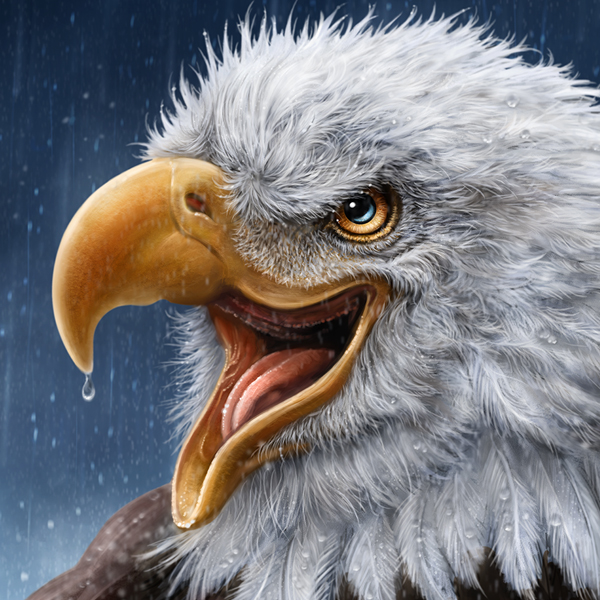
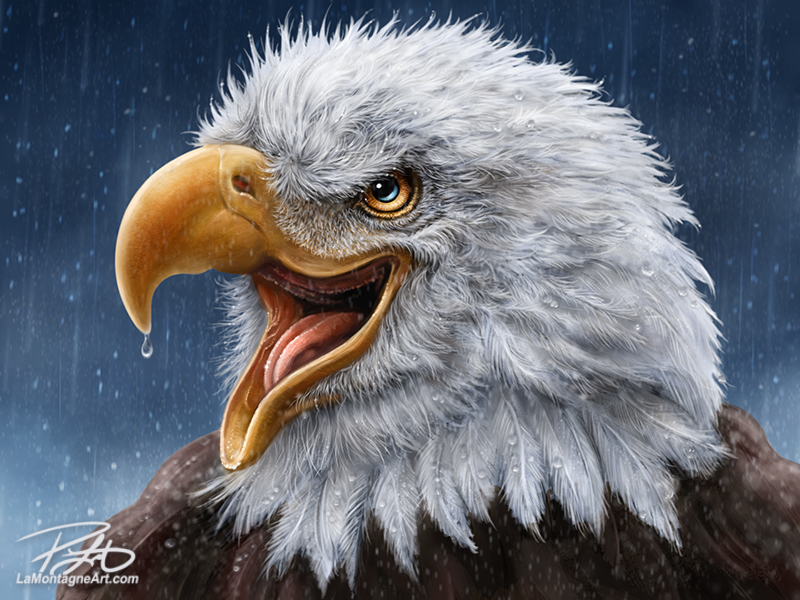 Painting the wet look in this one was challenging because I had to decide where to draw the line. I could have added more rain in the background and foreground, but I’d risk it looking too busy. The same could be said for the water droplets I painted on the feathers. More definition might equal more distraction.
Painting the wet look in this one was challenging because I had to decide where to draw the line. I could have added more rain in the background and foreground, but I’d risk it looking too busy. The same could be said for the water droplets I painted on the feathers. More definition might equal more distraction.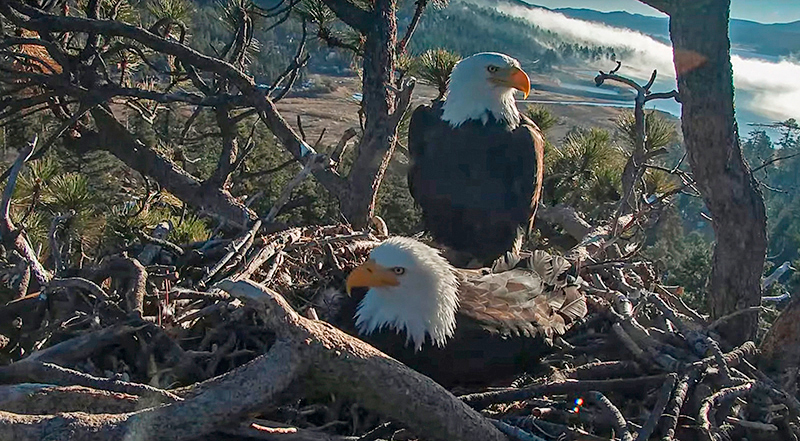
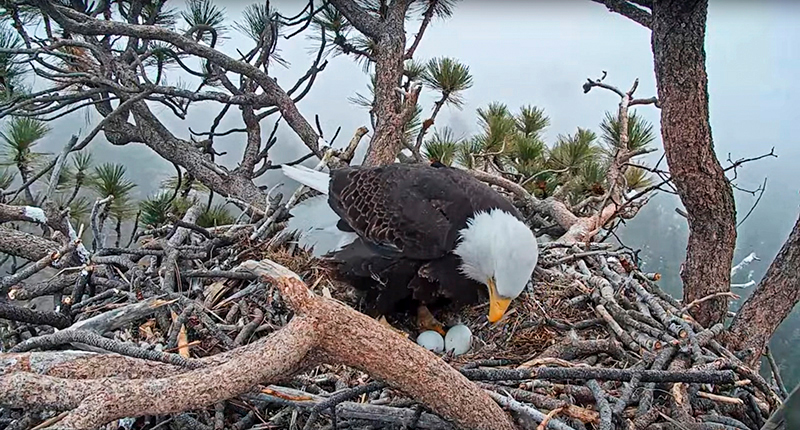
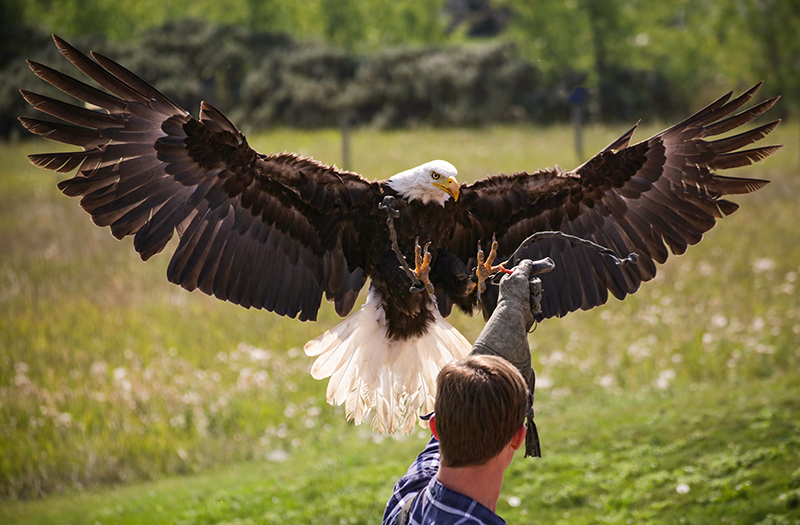
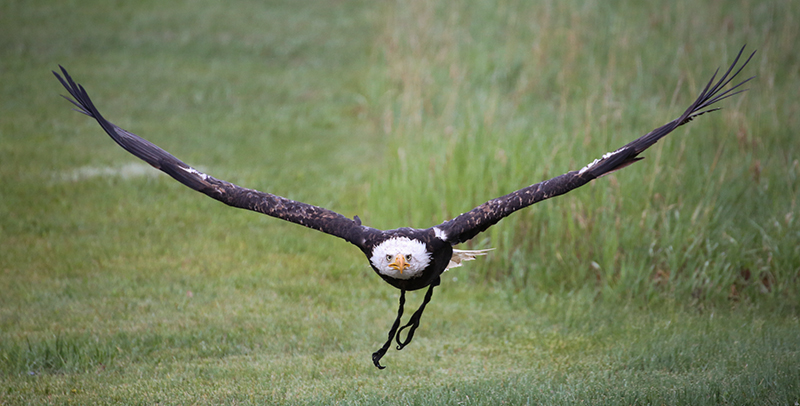
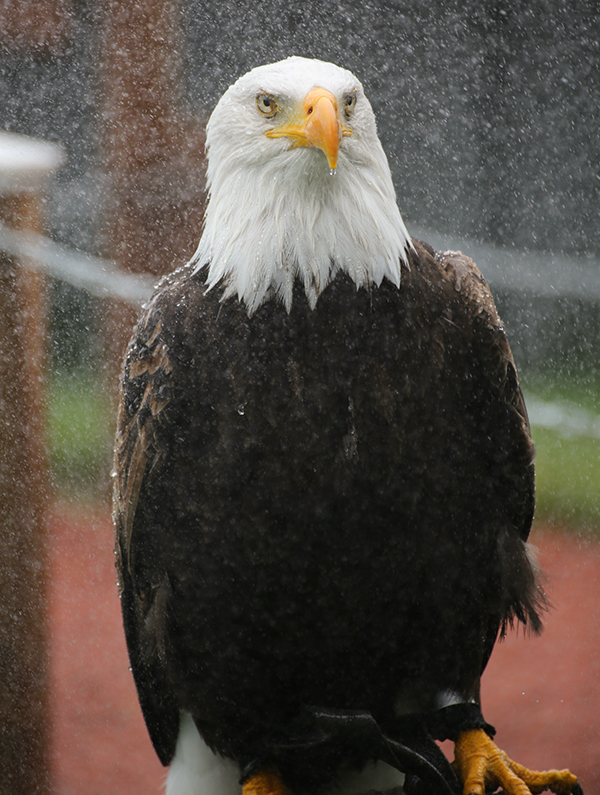
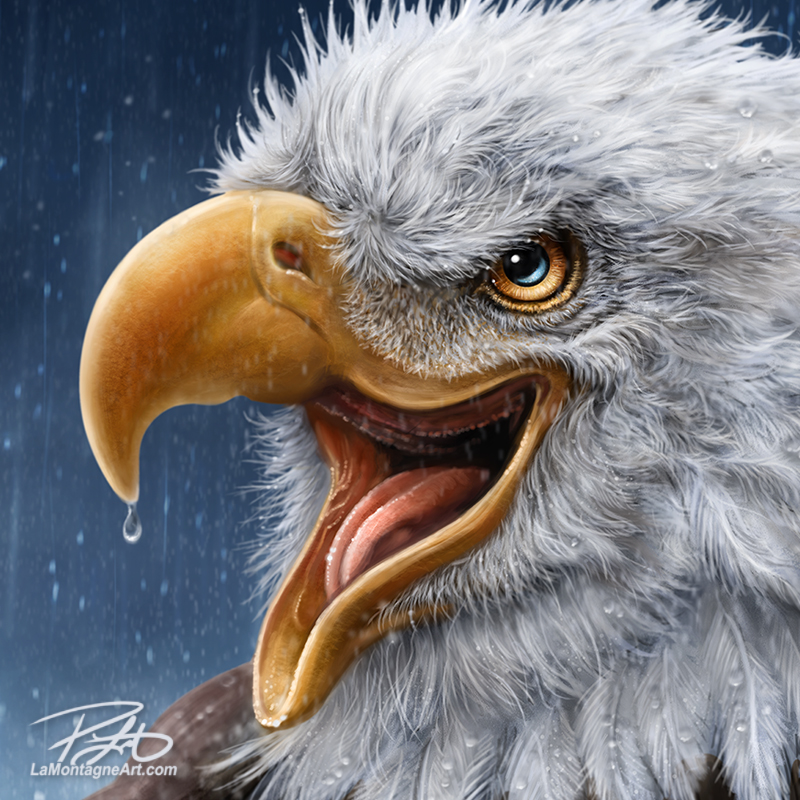
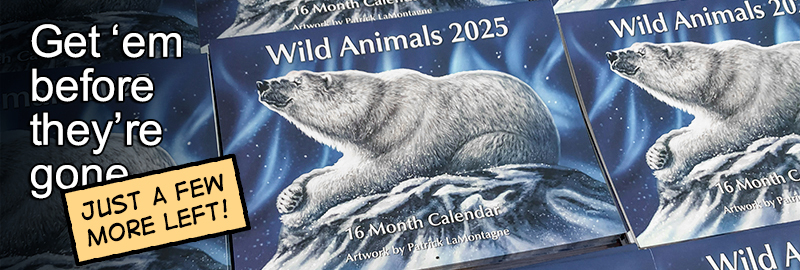
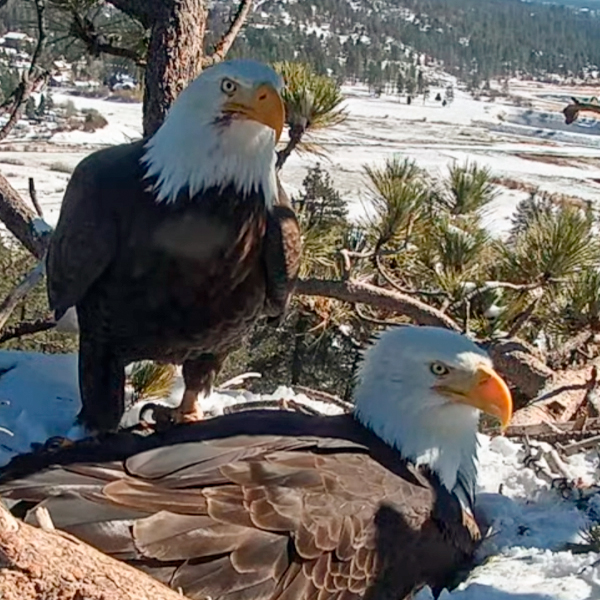
 Late last month, a subscriber sent me a
Late last month, a subscriber sent me a 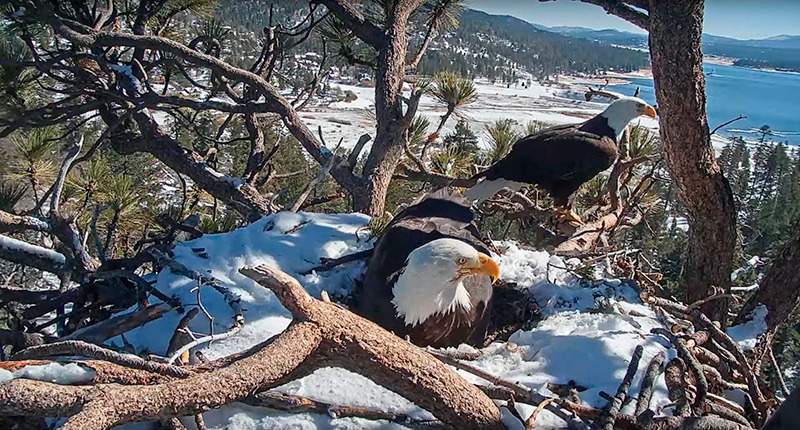
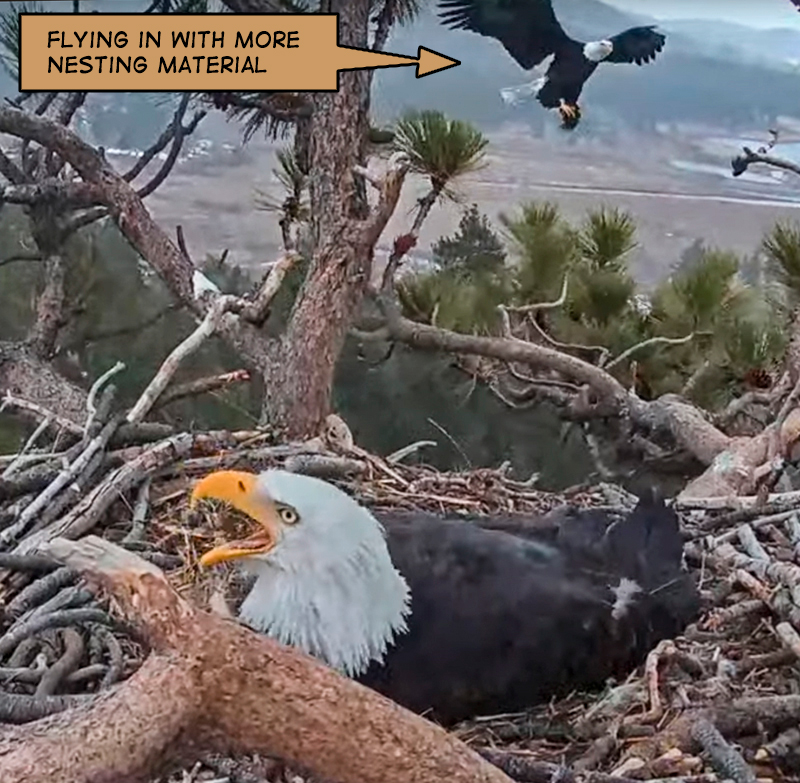
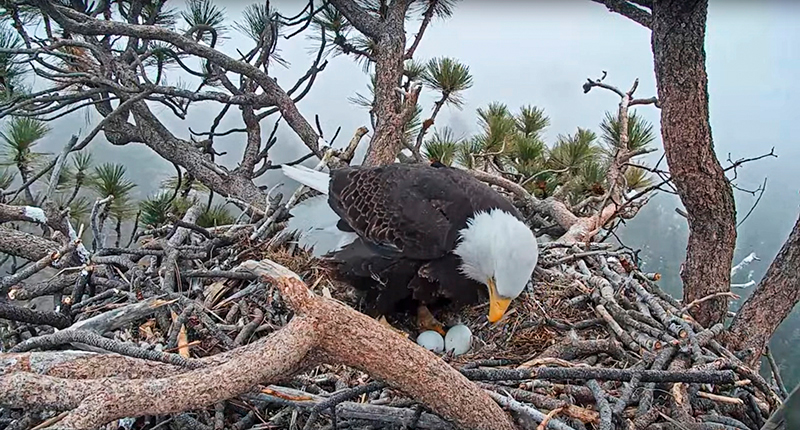
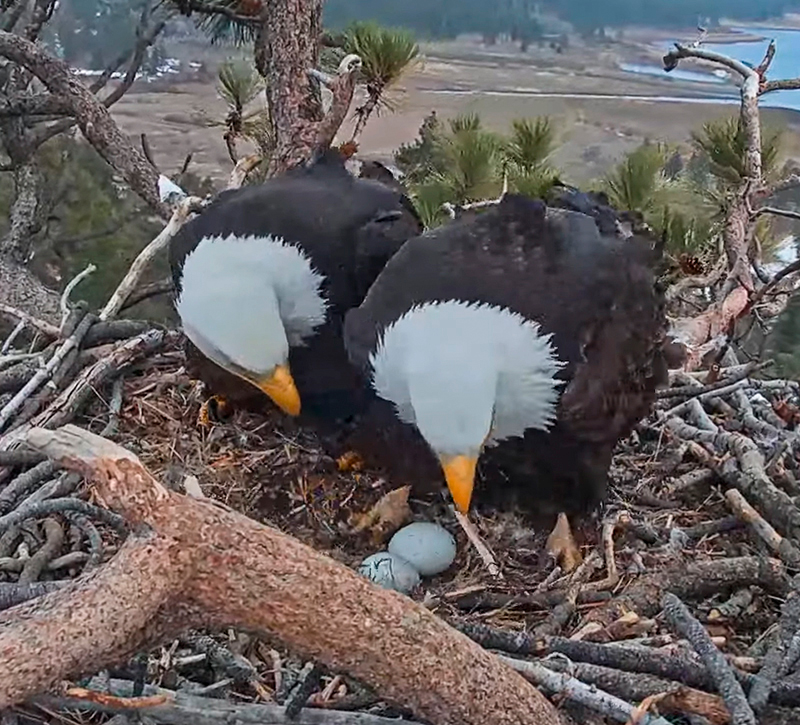 I’ve enjoyed watching the two eagles switch off incubating the eggs so the other can go eat, fending off marauding ravens, and interacting with each other. The chatter between them when one flies in is amusing and fascinating. That tree also gets rocking when the Santa Ana winds blow over the lake. A snowstorm blew in fast and heavy last week, and while the eagles certainly didn’t look like they were enjoying themselves, they handled it well.
I’ve enjoyed watching the two eagles switch off incubating the eggs so the other can go eat, fending off marauding ravens, and interacting with each other. The chatter between them when one flies in is amusing and fascinating. That tree also gets rocking when the Santa Ana winds blow over the lake. A snowstorm blew in fast and heavy last week, and while the eagles certainly didn’t look like they were enjoying themselves, they handled it well.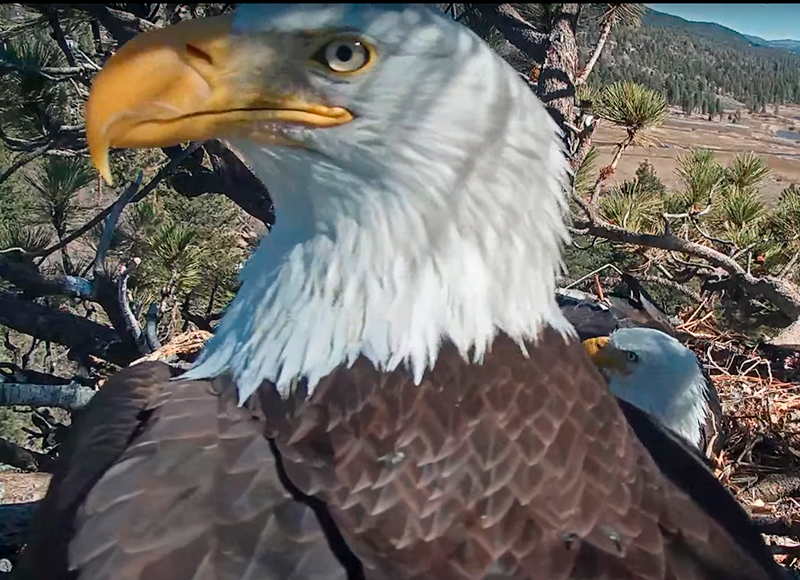

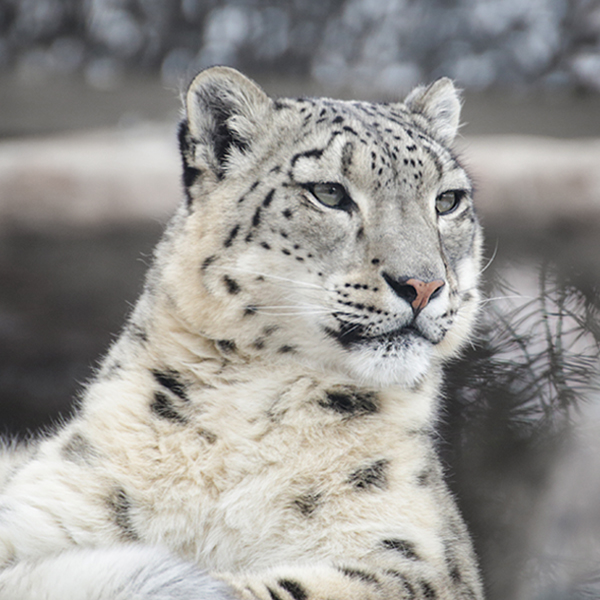
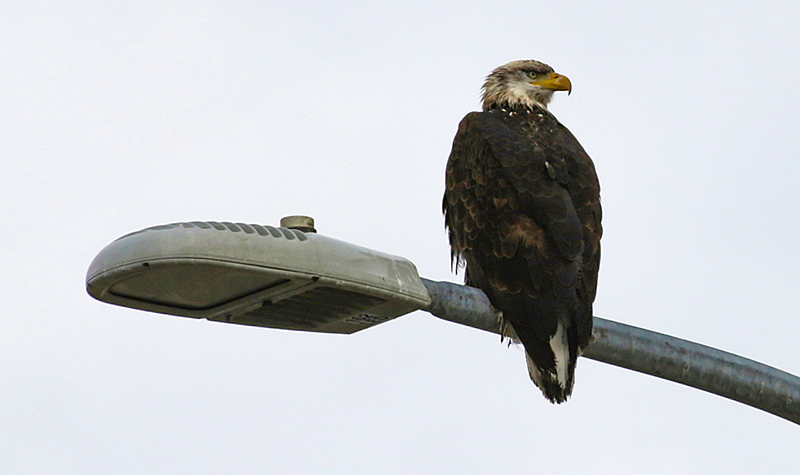 It was a scraggly-looking thing with uneven plumage—likely a juvenile, younger than five years old as the head feathers hadn’t yet turned white. Unfortunately, the pics aren’t anything I can use for reference, but it was still fun to see.
It was a scraggly-looking thing with uneven plumage—likely a juvenile, younger than five years old as the head feathers hadn’t yet turned white. Unfortunately, the pics aren’t anything I can use for reference, but it was still fun to see.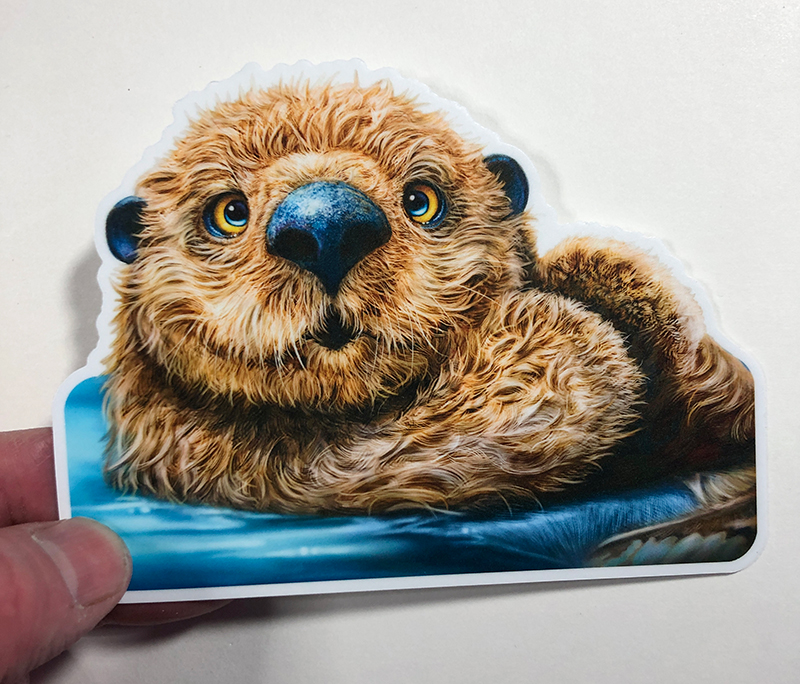
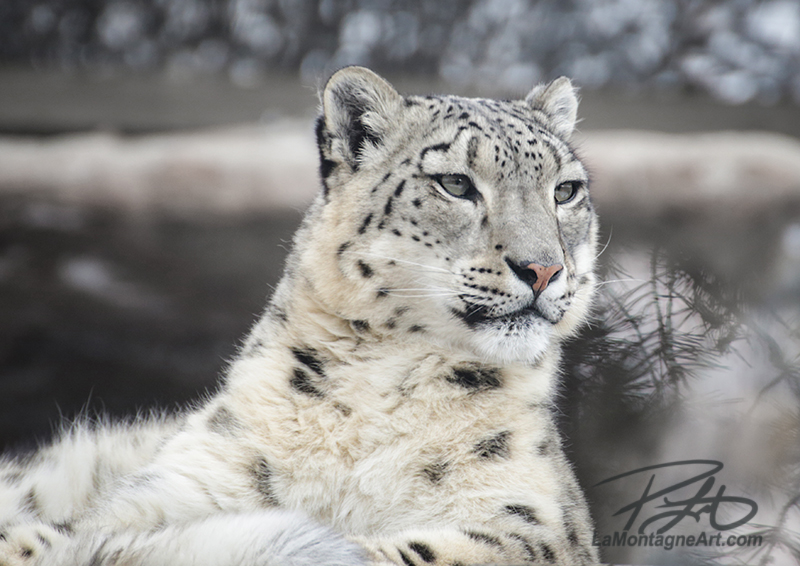 It was a pleasant excursion away from my desk and office, but I also realized how much more of a hermit I’ve become the past couple of years. Even though the roads were good, traffic was light, and I wasn’t around that many people, I’m happy to be back at my Wacom display alone this morning, continuing a painting of a happy, playful dog.
It was a pleasant excursion away from my desk and office, but I also realized how much more of a hermit I’ve become the past couple of years. Even though the roads were good, traffic was light, and I wasn’t around that many people, I’m happy to be back at my Wacom display alone this morning, continuing a painting of a happy, playful dog.